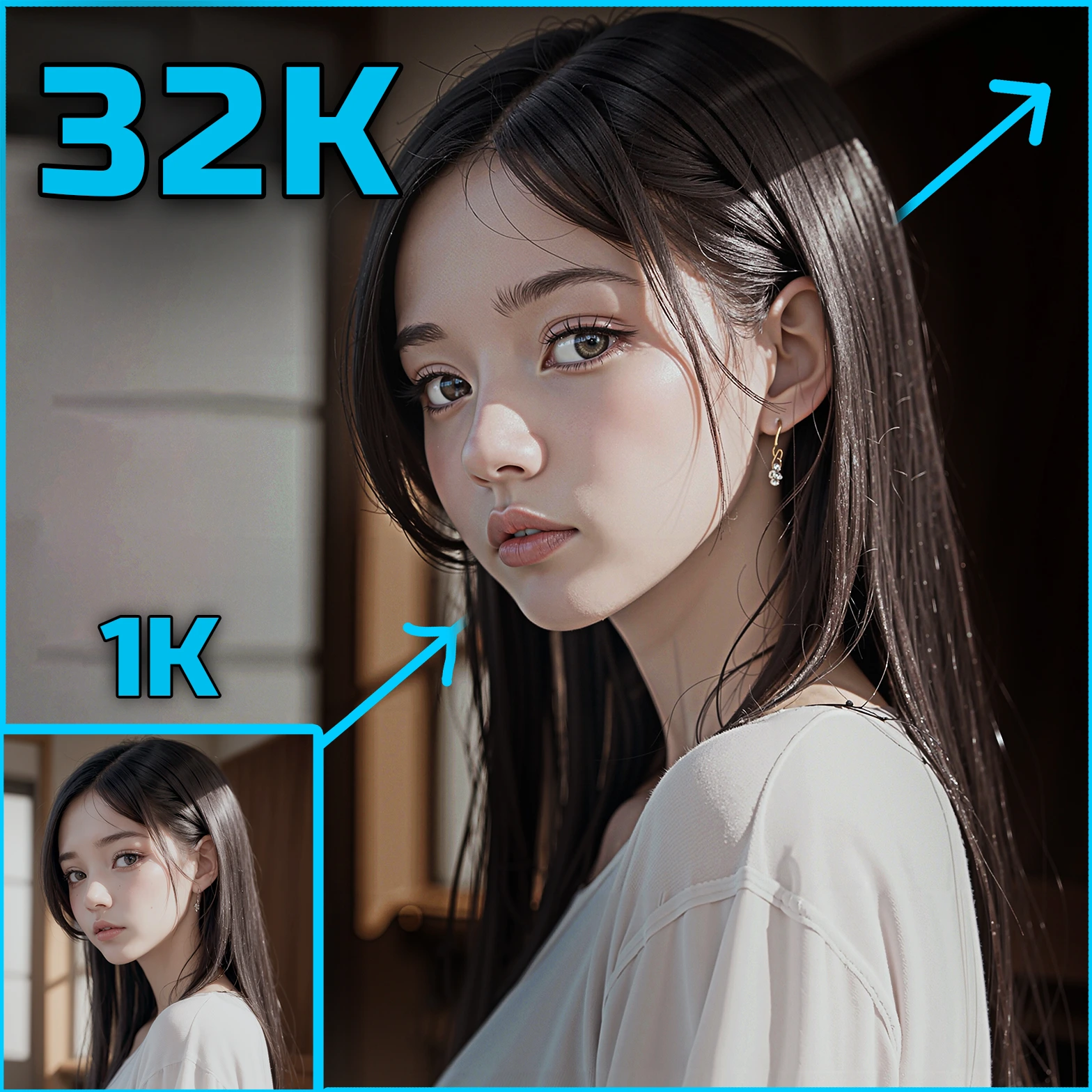ComfyUI Node: TiledK Sampler (Advanced)
BNK_TiledKSamplerAdvanced
Categorysampling
BlenderNeko (Account age: 762days) Extension
Tiled sampling for ComfyUI Latest Updated
2024-05-22 Github Stars
0.36K
How to Install Tiled sampling for ComfyUI
Install this extension via the ComfyUI Manager by searching for Tiled sampling for ComfyUI- 1. Click the Manager button in the main menu
- 2. Select Custom Nodes Manager button
- 3. Enter Tiled sampling for ComfyUI in the search bar
Visit ComfyUI Online for ready-to-use ComfyUI environment
- Free trial available
- 16GB VRAM to 80GB VRAM GPU machines
- 400+ preloaded models/nodes
- Freedom to upload custom models/nodes
- 200+ ready-to-run workflows
- 100% private workspace with up to 200GB storage
- Dedicated Support
TiledK Sampler (Advanced) Description
Enhances AI art generation through tiled sampling for efficient image creation with advanced features.
TiledK Sampler (Advanced):
The BNK_TiledKSamplerAdvanced node is designed to enhance the sampling process in AI art generation by utilizing a tiled approach. This advanced sampler allows for more efficient and flexible image generation, particularly when working with large images or complex compositions. By breaking down the image into smaller tiles, the node can apply different sampling strategies and configurations to each tile, ensuring high-quality results while optimizing computational resources. This method is particularly beneficial for generating detailed and high-resolution images, as it allows for more precise control over the sampling process and can handle various tiling strategies such as "padded" or "random strict." The node also supports advanced features like conditional sampling and denoising, making it a powerful tool for AI artists looking to push the boundaries of their creative projects.
TiledK Sampler (Advanced) Input Parameters:
model
The model parameter specifies the AI model to be used for the sampling process. This model is responsible for generating the image based on the provided inputs and configurations. The choice of model can significantly impact the quality and style of the generated image.
seed
The seed parameter is used to initialize the random number generator, ensuring reproducibility of the results. By setting a specific seed value, you can generate the same image multiple times. This is useful for fine-tuning and comparing different configurations. The seed value can be any integer.
tile_width
The tile_width parameter defines the width of each tile in the tiled sampling process. This parameter affects how the image is divided and processed. A larger tile width may result in fewer tiles and faster processing, but it may also reduce the level of detail. The value should be chosen based on the desired balance between performance and image quality.
tile_height
The tile_height parameter defines the height of each tile in the tiled sampling process. Similar to tile_width, this parameter affects the division and processing of the image. The value should be chosen to balance performance and image quality.
tiling_strategy
The tiling_strategy parameter determines the method used to divide the image into tiles. Options include "padded" and "random strict," each offering different advantages. The "padded" strategy ensures that tiles overlap slightly to avoid visible seams, while "random strict" applies a more randomized approach to tiling.
steps
The steps parameter specifies the number of sampling steps to be performed. More steps generally result in higher quality images but require more computational resources. The value should be chosen based on the desired image quality and available resources.
cfg
The cfg parameter stands for "configuration" and includes various settings that control the sampling process. This can include parameters like learning rate, batch size, and other model-specific settings. Proper configuration is crucial for achieving optimal results.
sampler_name
The sampler_name parameter specifies the name of the sampling algorithm to be used. Different samplers can produce different styles and qualities of images. The choice of sampler should be based on the desired outcome and the specific requirements of the project.
scheduler
The scheduler parameter controls the scheduling of the sampling steps. This can include settings like learning rate decay and other time-based adjustments. Proper scheduling can improve the efficiency and quality of the sampling process.
positive
The positive parameter includes the positive conditions or prompts that guide the image generation process. These conditions help the model understand what elements to include in the image. Properly setting positive conditions is crucial for achieving the desired outcome.
negative
The negative parameter includes the negative conditions or prompts that guide the image generation process. These conditions help the model understand what elements to avoid in the image. Properly setting negative conditions is crucial for avoiding unwanted elements.
latent_image
The latent_image parameter provides an initial latent representation of the image, which can be refined through the sampling process. This parameter is useful for starting the generation process from a specific point or for incorporating pre-existing elements into the new image.
denoise
The denoise parameter controls the level of denoising applied during the sampling process. Higher denoising values can help reduce noise and artifacts, resulting in cleaner images. The value should be chosen based on the desired balance between detail and noise reduction.
TiledK Sampler (Advanced) Output Parameters:
sampled_image
The sampled_image parameter is the final output of the node, representing the generated image after the sampling process. This image is the result of applying the specified model, conditions, and configurations to the input parameters. The quality and style of the sampled_image depend on the chosen settings and the effectiveness of the tiling strategy.
TiledK Sampler (Advanced) Usage Tips:
- Experiment with different tiling strategies to find the best balance between performance and image quality for your specific project.
- Use the seed parameter to ensure reproducibility when fine-tuning your settings and comparing results.
- Adjust the tile_width and tile_height parameters based on the resolution and detail required for your image.
- Properly configure the positive and negative conditions to guide the model towards the desired outcome and avoid unwanted elements.
- Utilize the denoise parameter to reduce noise and artifacts, especially when working with high-resolution images.
TiledK Sampler (Advanced) Common Errors and Solutions:
"Invalid tile dimensions"
- Explanation: The specified tile dimensions (tile_width or tile_height) are not valid or exceed the image dimensions.
- Solution: Ensure that the tile_width and tile_height parameters are set to appropriate values that fit within the overall image dimensions.
"Model not found"
- Explanation: The specified model parameter does not correspond to a valid or available model.
- Solution: Verify that the model parameter is set to a valid model name and that the model is properly loaded and accessible.
"Insufficient steps"
- Explanation: The number of steps specified is too low to produce a meaningful image.
- Solution: Increase the steps parameter to ensure that the sampling process has enough iterations to generate a high-quality image.
"Invalid seed value"
- Explanation: The seed parameter is not set to a valid integer value.
- Solution: Ensure that the seed parameter is set to a valid integer to enable reproducibility of the results.
"Configuration error"
- Explanation: The cfg parameter contains invalid or conflicting settings.
- Solution: Review and adjust the cfg parameter to ensure that all settings are valid and compatible with the chosen model and sampling process.
TiledK Sampler (Advanced) Related Nodes
RunComfy is the premier ComfyUI platform, offering ComfyUI online environment and services, along with ComfyUI workflows featuring stunning visuals. RunComfy also provides AI Playground, enabling artists to harness the latest AI tools to create incredible art.



